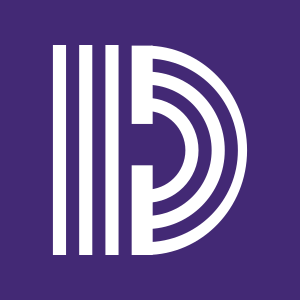Diffract is a .NET library that displays a readable diff between two objects. It is particularly useful for unit testing complex objects. Diffract is maintained by folks at D-EDGE.
Here is an example:
using DEdge.Diffract;
record User(string Name, int Age, string[] Pets);
var expected = new User("Emma", 42, new[] { "Oscar", "Fluffy", "Tibbles" });
var actual = new User("Andy", 42, new[] { "Oscar", "Sparky" });
Differ.Assert(expected, actual);The above throws an AssertionFailedException with the following message:
Value differs by 2 fields:
Name Expect = "Emma"
Actual = "Andy"
Pets collection differs:
Pets.Count Expect = 3
Actual = 2
Pets[1] Expect = "Fluffy"
Actual = "Sparky"
Diffract can drill down many composite types:
- POCOs;
- C# records;
- F# records and anonymous records;
- F# unions;
- enumerables (
IEnumerable<T>); - dictionaries (
IDictionary<K, V>,IReadOnlyDictionary<K, V>); - value and reference tuples.
Values of any other equatable type (like string and int in the above example) are treated as leaves that can be tested for equality.
POCO or record with multiple field differences:
record User(string Name, int Age, bool IsActive);
var expected = new User("Emma", 42, true);
var actual = new User("Andy", 35, true);Value differs by 2 fields:
Name Expect = "Emma"
Actual = "Andy"
Age Expect = 42
Actual = 35
F# union where the case is different:
type Contact =
| Email of address: string
| Phone of number: string
let expected = Email "[email protected]"
let actual = Phone "555-123-456"Value differs by union case:
Expect is Email
Actual is Phone
F# union where the case is the same and the value is different:
type Contact =
| Email of address: string
| Phone of number: string
let expected = Email "[email protected]"
let actual = Email "[email protected]"Value differs by union case Email fields:
address Expect = "[email protected]"
Actual = "[email protected]"
Enumerables show the counts if they differ, followed by the diffs per item:
var expected = new string[] { "first", "second" };
var actual = new string[] { "first", "2nd", "third" };Value collection differs:
Count Expect = 2
Actual = 3
[1] Expect = "second"
Actual = "2nd"
Dictionaries show the keys missing on either side, followed by the diffs per item that exists in both:
var expected = new Dictionary<string, int>
{
{ "first", 1 },
{ "second", 2 },
{ "third", 3 },
};
var actual = new Dictionary<string, int>
{
{ "first", 1 },
{ "third", 2 },
{ "fourth", 4 },
};Value dictionary differs:
["second"] Actual is missing
["fourth"] Expect is missing
["third"] Expect = 3
Actual = 2
Diffract lives in the namespace DEdge.Diffract. Its main API is the class Differ, which provides the following methods:
void Assert<T>(T expected, T actual, IDiffer<T> differ = null, PrintParams param = null)Computes the diff between two objects and, if it is not empty, throws an AssertionFailedException with the diff as message.
string ToString<T>(T expected, T actual, IDiffer<T> differ = null, PrintParams param = null)Prints the diff between two objects to a string.
void Write<T>(T expected, T actual, TextWriter writer = null, IDiffer<T> differ = null, PrintParams param = null)Prints the diff between two objects to the given TextWriter (or to standard output if not provided).
FSharpOption<Diff> Diff<T>(T expected, T actual, IDiffer<T> differ = null)Computes the diff between two objects. Returns None if the objects are found to be equal.




